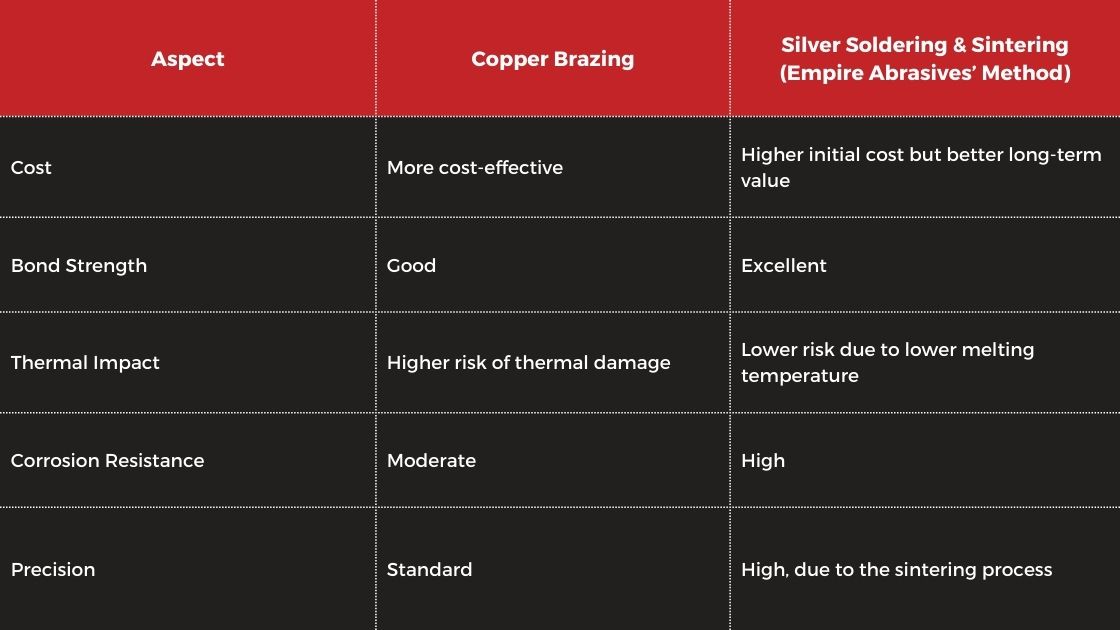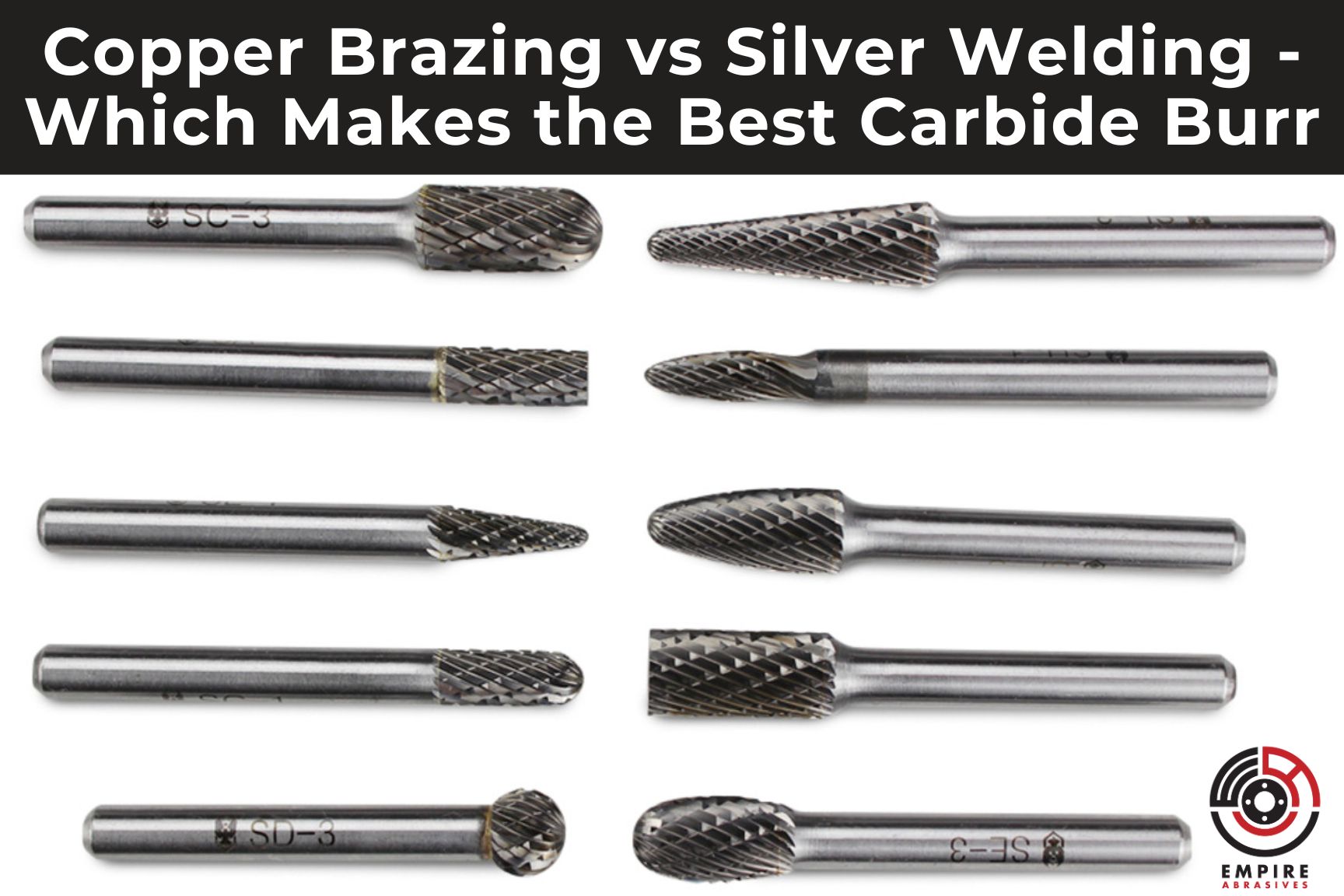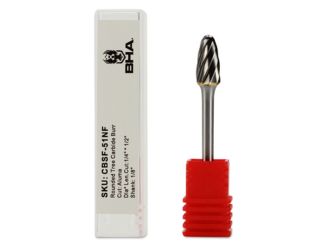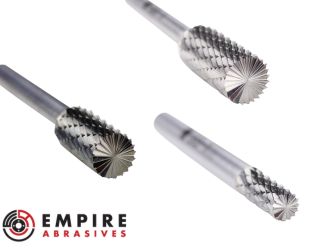The tungsten carbide used to make rotary burrs is one of the hardest and wear resistant compounds. The cutting edges are incredibly sharp and can cut and grind some of the toughest metals without showing any signs of wear.
However, carbide burrs are only as strong as their connection to the stainless steel shank. Weaker connections can lead to the head snapping off under too much pressure. This article will discuss the two methods used to make this connection and explain why some of your carbide burrs may be breaking.
Copper Brazing - The Old School Process
Copper brazing is the method most manufacturers use to connect carbide burr heads to their shanks. This process involves coating the steel shank with a copper-based filler, inserting it into the carbide head, then heating it to melt the filler that forms a braze joint when cooled. This method is cost-effective, but it comes with some drawbacks:
- High Brazing Temperatures: Copper brazing requires temperatures around 1100°C (2012°F), which is very close to the melting point of the cobalt in the carbide alloy. These high temperatures can sometimes weaken the carbide burr head.
- Stress and Potential for Micro-Cracks: The significant difference in thermal expansion between copper and tungsten carbide can create stress during cooling, increasing the risk of micro-cracks.
- Softer Joint: Copper is a softer metal that is more susceptible to more flexing and movement of the joint, especially in high-vibration applications.
Silver Soldering - The Modern Upgrade
Silver soldering is a newer approach that is less commonly used by manufacturers. This process involves using a silver flat bottom solder that goes between the shank and burr head. The solder is melted at a lower temperature than copper brazing and forms a bond when cooled. It has several advantages over copper brazing:
Silver soldering, while less common, offers several advantages over copper brazing:
- Lower Brazing Temperatures: Silver solder alloys melt at lower temperatures (around 700-800°C or 1292-1472°F) than copper. This method preserves the cobalt binder and reduces the risk of heat damage to the carbide head.
- Stronger, More Durable Bond: Silver soldering often results in a stronger, more durable bond than copper brazing, leading to a much lower chance of snapping off under pressure.
- Better Corrosion Resistance: Silver solder exhibits better resistance to corrosion than copper braze, making the burrs last longer in harsher environments.
Silver Soldering and Sintering: Empire Abrasives’ Method
At Empire Abrasives, we believe in using the best methods and materials to create the most durable and high-performing carbide burrs. That's why we’ve adopted a unique silver soldering and sintering process for our carbide burr production.
Our Process:
- Precision Fit: We begin by ensuring a precise fit between the carbide burr head and the stainless steel shank. This minimizes gaps and ensures optimal contact for the soldering process.
- Silver Soldering: We utilize a high-quality silver solder alloy with a low melting point to join the burr head and shank. This minimizes heat exposure and preserves the cobalt content within the carbide.
- Sintering: After soldering, we heat the joint to a high temperature, but below the melting point. This solidifies the bond between the tungsten carbide and the shank at a microscopic level, for a joint that can withstand the toughest applications.
- Quality Control: Each burr undergoes rigorous quality control testing to ensure the joint's integrity and the burr's overall performance. We're committed to delivering tools that exceed expectations and stand the test of time.
The Result:
Our Black Hawk Abrasives silver soldered and sintered carbide burrs boast:
- Unmatched Strength: The combination of silver soldering and sintering creates a more uniform and exceptionally strong bond between the carbide head and shank, virtually eliminating the risk of breakage under pressure.
- Maximum Durability: By preserving the cobalt content and minimizing heat damage, our burrs maintain their hardness and wear resistance for extended tool life.
- Superior Performance: The secure connection and optimal carbide integrity ensure smooth, efficient cutting and grinding with less vibrations in the most demanding applications.
- Corrosion Resistance: Silver’s natural resistance to corrosion means that our carbide burrs are less prone to degradation over time, even in harsh working conditions.
Comparing Copper and Silver Soldering

Why It Matters
Choosing the right soldering method is crucial for the performance and longevity of tungsten carbide burrs. While copper soldering is adequate for many applications, silver soldering, especially when combined with sintering, offers superior benefits that can lead to better performance and durability. This is particularly important in demanding industrial environments where tools are subjected to intense use and need to maintain their effectiveness over time.
At Empire Abrasives, we are committed to providing high-quality tools that meet the rigorous demands of our customers. Our advanced soldering and sintering process for tungsten carbide burrs not only ensures a stronger bond but also delivers tools that stand the test of time.




